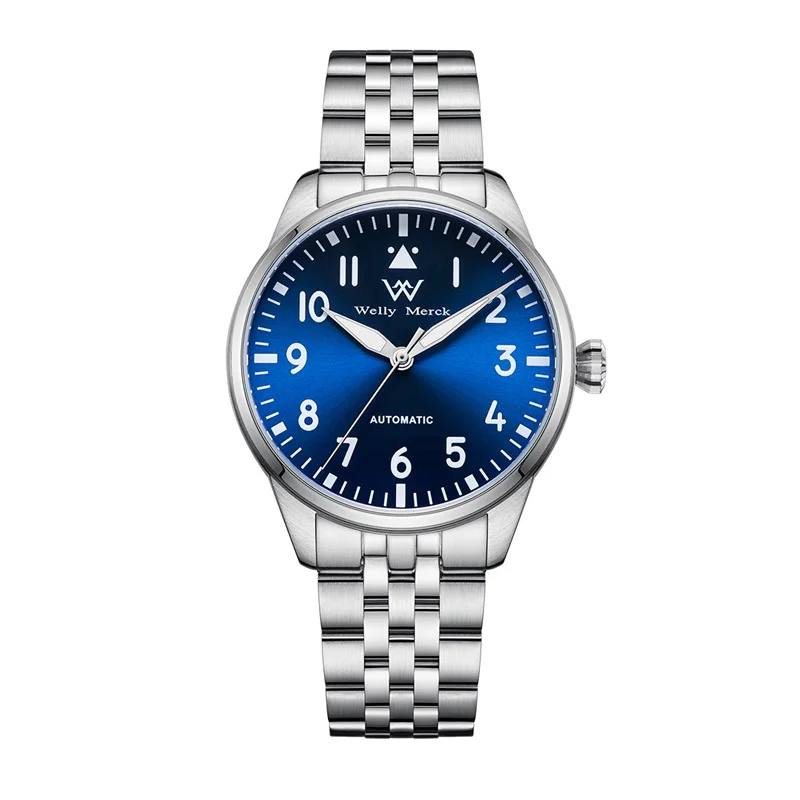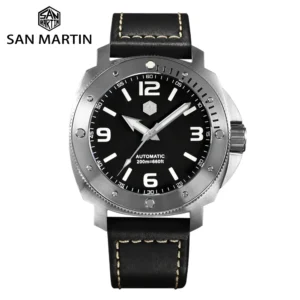Robust Foundations: Why Watch Design Matters in Survival Situations
In the most challenging environments where human survival hangs in the balance, a timepiece becomes far more than a simple accessory. When facing extreme conditions, conventional watches—even sophisticated smartwatches—often fail precisely when needed most. Their delicate components crack under pressure, their batteries die without warning, and their functionality disappears at the worst possible moment.
A true survival watch is fundamentally different in its conception and execution. It’s engineered specifically to operate reliably when all other systems fail, maintaining accuracy and function even under extraordinary stress.
The psychological impact of timekeeping in survival situations cannot be overstated. Having access to accurate time:
- Reduces disorientation and anxiety
- Enables precise resource rationing
- Facilitates coordinated actions and rendezvous
- Provides structure amid chaos
Throughout history, explorers, military personnel, and disaster survivors have relied on rugged watch cases for outdoor adventures to maintain their bearings both physically and mentally. When your life depends on precise timing and navigation, the engineering principles behind your timepiece become a matter of survival itself.
Core Design Principles of Survival Timepieces
The creation of watches that perform reliably in survival scenarios follows four foundational design principles. These aren’t isolated features but an integrated system where each principle reinforces the others.
A true survival timepiece must embody:
– Uncompromising durability against physical forces
– Unwavering reliability in power delivery
– Absolute legibility under all conditions
– Purpose-driven ergonomics for practical use
Compromising on any single principle undermines the entire system. These core tenets guide both the manufacturing decisions of premium watchmakers and should inform the selection criteria of anyone seeking a timepiece for challenging environments.
Understanding the durability factors in rugged watches provides the foundation for evaluating whether a timepiece can truly be relied upon when everything else fails.
Uncompromising Durability: Building Watches that Withstand Extreme Forces
Case Materials
The external shell of a survival watch must resist impacts, abrasion, corrosion, and extreme pressure. The most common materials include:
Titanium: At 45% lighter than steel while maintaining comparable strength, titanium offers exceptional corrosion resistance even in saltwater environments. Its hypoallergenic properties also prevent skin irritation during extended wear.
High-Grade Stainless Steel: Particularly 316L marine-grade steel provides excellent impact resistance and corrosion protection at a more accessible price point than titanium, though with greater weight.
Advanced Polymers: Carbon-reinforced polymers and composite materials offer impressive shock absorption capabilities while drastically reducing weight. These materials can withstand repeated impacts that would deform metal cases.
The best materials for outdoor watch cases combine these properties in ways that match specific environmental challenges.
Crystal Protection
The “window” of your timepiece is often its most vulnerable point:
Sapphire Crystal: With a hardness of 9 on the Mohs scale (diamonds are 10), sapphire resists scratches from nearly all natural materials. Only diamond, certain ceramics, and other sapphires can mark it.
Mineral Glass: Heat-treated to increase hardness, this more affordable alternative offers decent scratch resistance but is more vulnerable than sapphire.
Hardened Glass: Chemically strengthened glass provides a middle ground, offering improved impact resistance compared to sapphire, though with less scratch protection.
Water Resistance
True water resistance goes beyond marketing numbers:
ISO 6425 Dive Watch Standard: Requires testing each individual watch (not just samples) under pressure exceeding the rated depth by 25%, along with thermal shock testing and crown/pusher operational testing while submerged.
Depth Ratings: Professional-spec dive watches typically offer water resistance to at least 200 meters (660 feet), with gaskets and seals engineered to maintain integrity even under rapid pressure changes.
Helium Release Valves: For professional diving applications, these specialized valves allow trapped helium molecules to escape during decompression without damaging the watch.
Temperature Tolerance
Quality survival timepieces maintain accuracy and function across temperature extremes, typically operating reliably from -20°F to 140°F (-29°C to 60°C), well beyond the comfort range of human survival.
Unwavering Reliability: Power Systems That Never Surrender
The most brilliantly engineered watch becomes useless once its power source fails. Survival timepieces employ various systems to ensure continuous operation:
Automatic Mechanical Movements
Automatic watches harness the natural motion of your body to wind the mainspring, storing energy mechanically. Key advantages include:
- Complete independence from batteries or external charging
- Potential decades of operation without electronics
- No degradation in extreme temperatures that would kill batteries
- Typical power reserves of 40-80 hours when not worn
The traditional engineering behind automatic movements has proven reliable in environments ranging from deep ocean exploration to high-altitude mountaineering.
Solar Power Systems
Solar-powered watches convert light energy to electrical energy, storing it in rechargeable cells:
- Premium models can function for months or years on a full charge
- Many include power-saving modes that maintain essential functions while preserving energy
- Light from any source (not just sunlight) can recharge the system
- No battery replacement required for 10+ years in quality models
Long-Life Battery Systems
Advanced lithium batteries with power management systems offer:
- Operational lifespans of 5-10 years in quartz watches
- Low temperature performance superior to standard alkaline batteries
- Power reserve indicators to prevent unexpected failure
Movement Reliability
Different movement types offer varying accuracy under stress:
* Mechanical movements typically vary by -4 to +6 seconds per day
* Quartz movements typically vary by ±15 seconds per month
* Thermocompensated quartz can achieve ±10 seconds per year
The reliability advantage shifts between these systems depending on the environment and duration of the survival situation.
Absolute Legibility: Designs That Communicate Clearly Under Any Condition
In survival situations, extracting information from your watch instantly can be critical. Effective dial design principles include:
Contrast and Layout
- Contrast ratio between hands/markers and dial background should exceed 7:1 for optimal visibility
- Hand shapes should be instantly distinguishable (hours vs. minutes vs. seconds)
- Index markers at 3, 6, 9, and 12 should be distinctively different for rapid orientation
- Critical information should be readable from at least 18 inches (45 cm) away in low light
Tactical watch dial layouts emphasize this functional clarity over decorative elements.
Illumination Technologies
Three main approaches ensure visibility in darkness:
Tritium Gas Tubes: Self-powered illumination using radioactive hydrogen isotopes sealed in glass tubes that glow continuously for 10-25 years without requiring charging or activation.
Super-LumiNova and Similar Compounds: Photoluminescent materials that absorb light energy and release it slowly, providing 8-10 hours of diminishing glow after exposure to light sources.
Battery-Powered Illumination: Electric backlighting or LED systems offering the brightest illumination but requiring battery power to function.
Anti-Reflective Treatments
Multiple layers of anti-reflective coating on crystal surfaces reduce glare and improve visibility in bright conditions. Quality watches apply these coatings to both exterior and interior crystal surfaces, reducing reflection by over 99%.
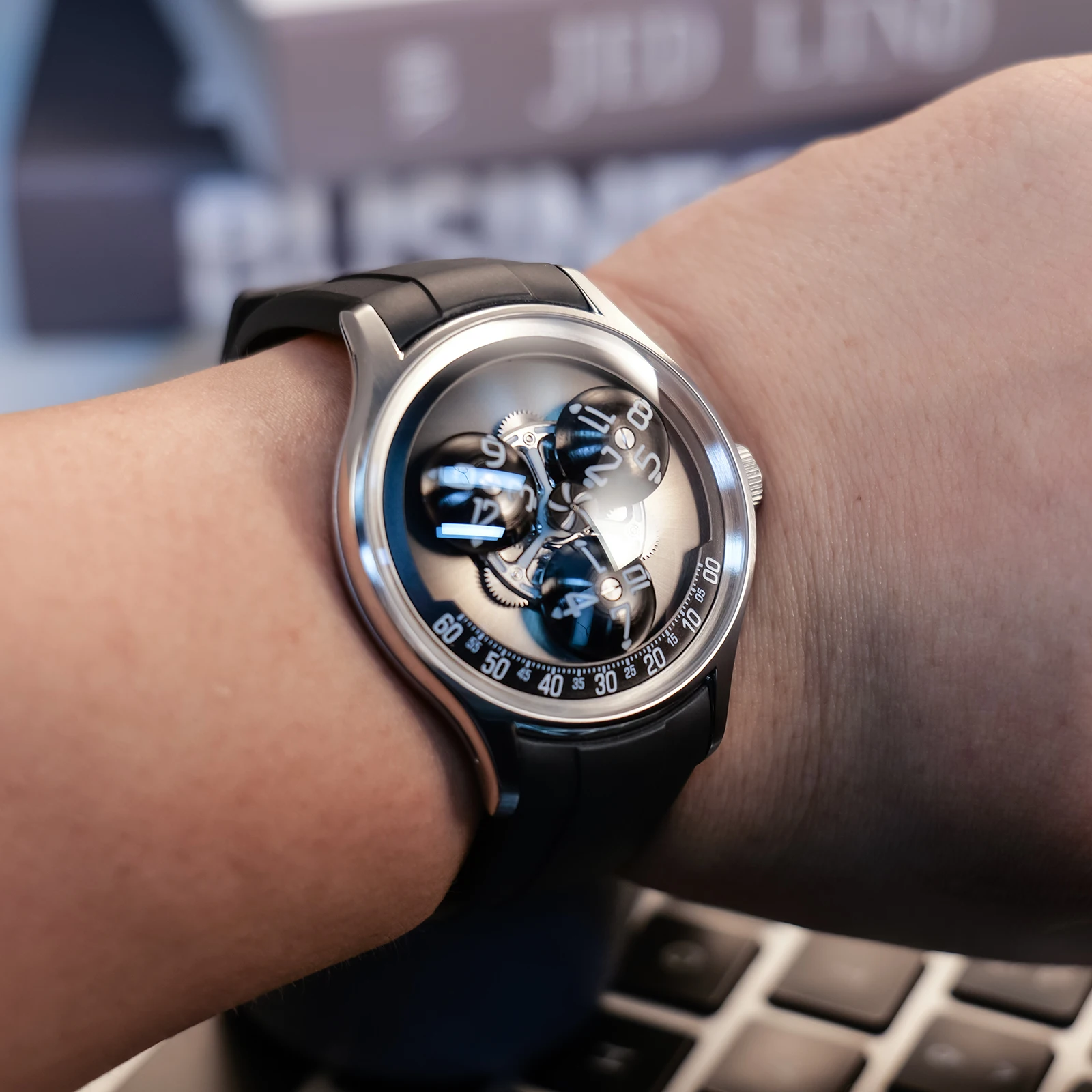
Purpose-Driven Ergonomics: Wearability That Maintains Function Under Duress
A survival watch must remain securely attached and accessible regardless of conditions or activities.
Secure Attachment Systems
NATO/Zulu Straps: Designed originally for military use, these nylon straps run underneath the watch case, providing redundant security—if one spring bar fails, the watch remains attached.
Metal Bracelets: Engineered with screw-in links and deployant clasps with multiple safety catches to prevent accidental opening.
Rubber/Elastomer Straps: Offer chemical resistance, water shedding, and stretch memory to maintain fit over wetsuits or weather-appropriate clothing.
Control Interface Design
- Crowns and pushers sized and textured for operation with gloved hands (typically minimum 6mm diameter)
- Protective crown guards preventing accidental adjustment
- Bezel designs with deep serrations for grip when wet or with reduced dexterity
- Pushers requiring deliberate force (typically 350-500 grams) to prevent accidental activation
Case Profiles
Tactical automatic watches feature carefully engineered case profiles that minimize snagging on equipment or environment while maximizing protection of vulnerable components.
Essential Functionality: Beyond Timekeeping in Critical Scenarios
While accurate timekeeping forms the foundation of any survival watch, additional functionalities transform it into a comprehensive survival tool. These functions follow a hierarchy of importance based on various survival scenarios:
- Primary functions essential in all environments
- Scenario-specific functions for particular conditions
- Specialized tools for specific technical applications
The implementation of these functions must never compromise the core design principles—reliability cannot be sacrificed for feature bloat. Different environments demand different functional priorities, from the arctic to the desert to open ocean scenarios.
The shock resistance features crucial for survival watches protect these vital functions from impact damage that would render them useless when needed most.
Navigation Systems: Finding Direction When GPS Fails
In survival situations, electronic navigation aids often fail due to power depletion, signal loss, or damage. Watch-based navigation systems provide critical backup capabilities:
Compass Systems
Digital Compasses: Electronic sensors detect magnetic north, typically accurate to ±2 degrees after proper calibration. These require battery power but provide precise readings with minimal user training.
Analog Compass Bezels: Rotating bezels marked with cardinal directions allow manual compass operation when aligned with the sun, requiring knowledge of basic celestial navigation but functioning without power.
Altimeter Functions
Barometric altimeters in watches measure air pressure changes to determine elevation, typically accurate to ±30 feet (9 meters) when regularly calibrated. This enables:
- Tracking vertical progress on slopes or mountains
- Location confirmation when used with topographic maps
- Vertical navigation when visibility is limited
Barometric Pressure Monitoring
Rapid pressure changes often indicate approaching weather systems. Watches with barometric trend indicators can provide 12-24 hour advance warning of changing conditions, allowing critical preparation time.
GMT automatic watches provide additional functionality for location tracking and time zone management that complements these navigation systems.
Time-Based Tactical Functions: Managing Critical Resources
Beyond simple timekeeping, specialized timing functions serve crucial survival roles:
Chronograph (Stopwatch) Applications
- Distance Calculation: Combined with known speeds or pace counts, precise timing enables distance estimation when visibility is limited
- Resource Allocation: Timing consumption rates of critical supplies helps establish sustainable usage patterns
- Coordination: Synchronizing movements or rendezvous timing between separated group members
Countdown Timers
- Purification Timing: Water requires specific treatment durations (typically 30-45 minutes for chemical purification)
- Shelter Construction: Optimizing limited daylight hours for critical tasks
- Rest Cycles: Managing sleep during extended operations to prevent fatigue-induced errors
The integration of tactical features in automatic watches enables these functions without compromising reliability or requiring external power sources.
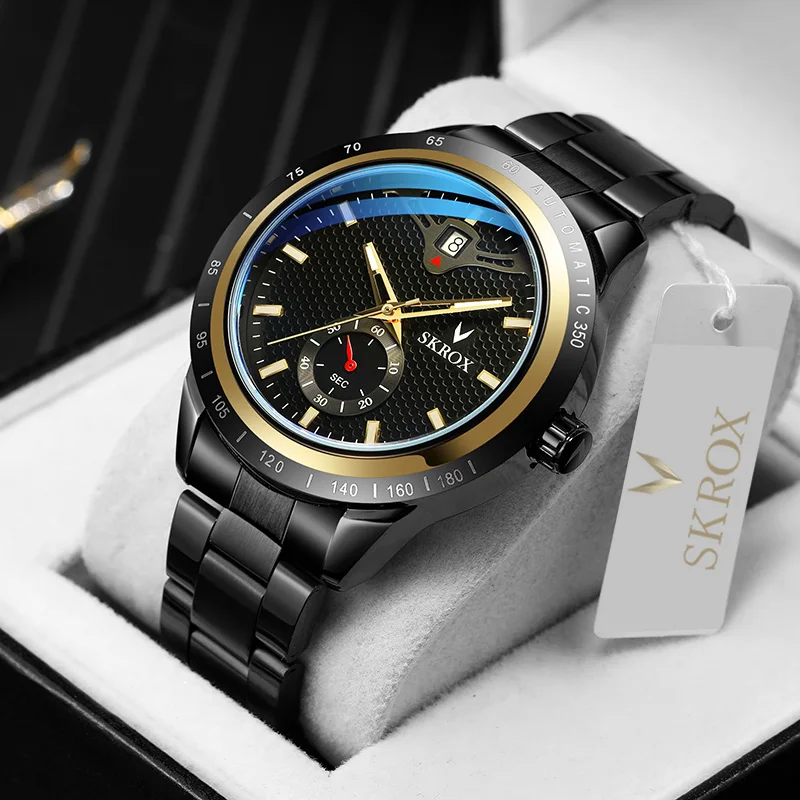
Specialized Environmental Monitoring Tools
Advanced survival watches incorporate tools that provide critical environmental data:
Temperature Monitoring
Integrated thermometers measure ambient temperature, helping monitor:
* Heat stroke or hypothermia risk conditions
* Safe food storage temperatures
* Environmental changes indicating weather shifts
For accuracy, the watch must be removed from the wrist for 10-15 minutes before reading to eliminate body heat interference.
Tide and Lunar Phase Tracking
In coastal environments, understanding tidal movements is essential for:
* Safe passage along shorelines
* Optimal fishing or foraging opportunities
* Predicting when certain areas will be accessible or submerged
Lunar phase tracking assists with natural light prediction and traditional navigation methods.
Sunrise/Sunset Calculation
Daylight management is critical for survival operations. Advanced watches calculate daily sunrise and sunset times based on date and location data, enabling optimal planning of activities requiring natural light.
Rugged automatic watches with these environmental monitoring capabilities provide crucial data without requiring separate tools that add weight and complexity to survival gear.
Selecting Your Survival Timepiece: Matching Design to Environment
Choosing the optimal survival watch requires analyzing your most likely operational environment and matching watch characteristics accordingly.
Environment-Specific Considerations
Desert/Arid Environments
- Prioritize: Dust resistance, temperature tolerance, solar power
- Case Materials: Titanium (resists heat absorption) or polymers (lightweight)
- Critical Functions: Temperature monitoring, solar compass functionality
- Special Concerns: Thermal expansion issues, crown sealing against fine dust
Arctic/Extreme Cold
- Prioritize: Low-temperature operation, glove-compatible controls
- Case Materials: Titanium or steel (polymer can become brittle in extreme cold)
- Critical Functions: Temperature alerts, extended battery life
- Special Concerns: Lubrication suitable for sub-zero operation, condensation prevention
Marine/Coastal
- Prioritize: Corrosion resistance, high water pressure rating, tide tracking
- Case Materials: Marine-grade steel, titanium, or specialized polymers
- Critical Functions: Unidirectional timing bezel, luminosity
- Special Concerns: Saltwater corrosion, pressure tolerance during diving
Jungle/High Humidity
- Prioritize: Fungus/mold resistance, water sealing, antimicrobial straps
- Case Materials: PVD-coated metals, synthetic straps
- Critical Functions: Barometric pressure tracking, compass
- Special Concerns: Gasket performance in constant humidity, crystal fogging
Balancing Complexity and Reliability
More features introduce more potential failure points. Consider:
* Digital features provide more functionality but depend on battery power
* Mechanical functions offer fewer capabilities but continue working without power
* Hybrid designs provide a balance but require understanding of which functions remain available when power is depleted
The engineering behind adventure watch cases addresses these tradeoffs through careful material selection and feature integration.
Military Specifications Reality Check
Terms like “military-grade” or “mil-spec” often appear in marketing but frequently lack substance. Legitimate military specifications include:
- MIL-PRF-46374G: Actual U.S. military performance standard for watches
- ISO 6425: International standard for dive watches
- MIL-STD-810: Environmental engineering considerations and tests
Field and military watches that genuinely meet these standards undergo rigorous testing rather than simply adopting a military aesthetic.
Military Inspired Automatic Watches, Rugged Automatic Watches, Tactical Automatic Watches
Price range: $852.14 through $994.60 Select options This product has multiple variants. The options may be chosen on the product pageClassic Automatic Dress Watches, Day Date Automatic Watches, Perpetual Calendar Automatic Watches
Price range: $540.60 through $574.60 Select options This product has multiple variants. The options may be chosen on the product pageAutomatic Chronograph Watches, Chronograph Pilot Watches
Price range: $233.36 through $237.58 Select options This product has multiple variants. The options may be chosen on the product pageClassic Automatic Dress Watches, GMT Automatic Watches, GMT Pilot Watches
Price range: $1,240.86 through $1,463.33 Select options This product has multiple variants. The options may be chosen on the product pageAutomatic Chronograph Watches, Classic Style Dive Watches
$3,053.06 Select options This product has multiple variants. The options may be chosen on the product pageAutomatic Skeleton Watches, Open Heart Automatic Watches
$98.36 Select options This product has multiple variants. The options may be chosen on the product page
Mechanical Excellence in Action: Noteworthy Survival Watch Designs
Different philosophical approaches to survival watch design have emerged, each with unique strengths:
Triple-Resistant Design Philosophy
This approach prioritizes protection against the three primary threats to mechanical watches:
* Shock resistance through multi-component shock absorption systems
* Water resistance through redundant sealing methods
* Magnetic resistance through soft-iron inner cases
This design philosophy emphasizes protective engineering over additional features, focusing on the watch’s continued operation under adverse conditions.
Fully Mechanical Self-Sufficient Approach
Completely eliminating batteries and electronics, this approach relies on:
* Automatic winding mechanisms harvesting energy from movement
* Purely mechanical complications (chronographs, GMT functions)
* Traditional navigational tools like bidirectional bezels
These watches emphasize independence from external resources and electronics that could fail in crisis situations.
Multi-Sensor Digital Integration
At the opposite end of the spectrum, this approach incorporates:
* Multiple environmental sensors (altimeter, barometer, compass)
* GPS positioning with breadcrumb tracking
* Wireless communication capabilities
While offering extensive functionality, these systems trade power independence for enhanced capabilities.
Hybrid Analog-Digital Systems
Seeking a middle ground, hybrid systems:
* Combine traditional analog displays with supplementary digital readouts
* Provide mechanical timekeeping with digital sensor data
* Offer extended functionality while maintaining a core of battery-independent operation
How rugged watches perform in extreme conditions demonstrates the practical outcomes of these different design philosophies when tested in the field.
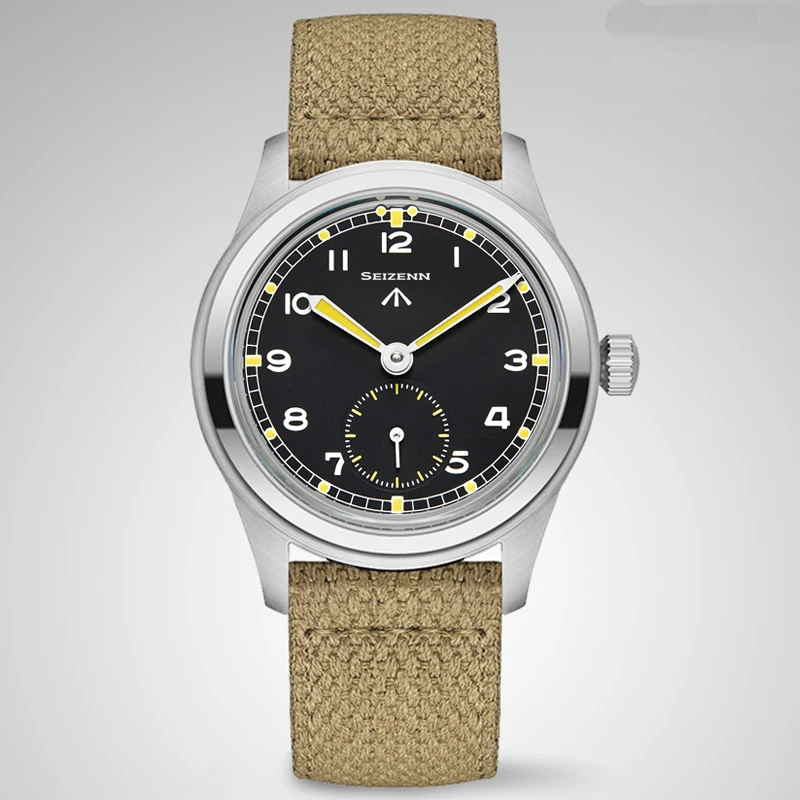
Beyond Purchase: Maximizing Performance Through Proper Use and Maintenance
Owning a survival watch is only the beginning—proper use and maintenance dramatically impact its reliability when needed.
Pre-Emergency Familiarization
Before facing critical situations:
* Practice all watch functions until they become second nature
* Test illumination systems under various lighting conditions
* Verify accuracy against known time standards monthly
* Document and memorize key operation sequences
Routine Maintenance for Maximum Reliability
- Water Resistance Preservation:
- Replace gaskets every 2-5 years depending on usage
- Test water resistance annually
Clean salt residue immediately after exposure
Movement Care:
- Service mechanical movements every 5-7 years
- Keep automatic watches moving when not worn using watch winders
Avoid magnetic fields that can affect accuracy
Power System Optimization:
- For solar watches, ensure regular exposure to light
- For automatic watches, maintain regular wearing patterns
- For battery-powered watches, replace batteries before their expected end-of-life
Field Expedient Repairs
Simple tools and techniques can address common issues:
* Compressed air can remove dust or debris from rotating bezels
* Silicone grease can temporarily improve water resistance
* Spring bar tools allow strap replacement with improvised materials
Military-inspired automatic watches often feature designs that facilitate field maintenance with minimal specialized tools.
Are Smartwatches Viable Survival Tools?
Modern smartwatches offer impressive capabilities but present specific challenges in survival contexts:
Advantages:
* Comprehensive sensor arrays providing environmental data
* GPS tracking with detailed mapping
* Health monitoring (heart rate, activity, stress levels)
* Dynamic information updating
Critical Limitations:
* Battery life typically limited to 1-7 days under ideal conditions
* Performance degradation in extreme temperatures
* Dependency on external systems for full functionality
* Fragility compared to purpose-built survival watches
* Inability to function when batteries are depleted
In practical terms, smartwatches can serve as excellent primary tools in short-duration scenarios with predictable access to charging. However, they should always be backed up by a traditional watch for extended or unpredictable situations. Some modern hybrid approaches incorporate limited smart features into traditional watch designs, offering a compromise between connectivity and reliability.
Beyond the Wrist: Integrating Your Watch into a Complete Survival System
A watch, no matter how well-designed, functions best as part of an integrated survival approach:
Complementary Navigation Tools
- Combine watch compass with traditional magnetic compass for verification
- Use watch altimeter with topographic maps for precise positioning
- Supplement watch barometer with visual weather observation
Skill Development
The most sophisticated survival watch becomes exponentially more valuable when paired with:
* Basic celestial navigation knowledge
* Time-based distance calculation skills
* Weather prediction training
* Map and terrain association techniques
Redundancy Principle
The survival principle of “two is one, one is none” applies particularly to critical timing and navigation functions. Your watch should be:
* One of at least two time-keeping methods
* Part of multiple navigation systems
* Considered essential but never the only option
By understanding both the capabilities and limitations of survival watch design, you can select a timepiece that will serve reliably when everything else fails. At Sharp Aspect, we recognize that a watch in these scenarios isn’t just an accessory—it’s a crucial tool that can mean the difference between life and death when the unexpected occurs.

